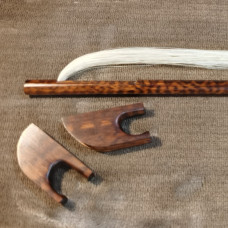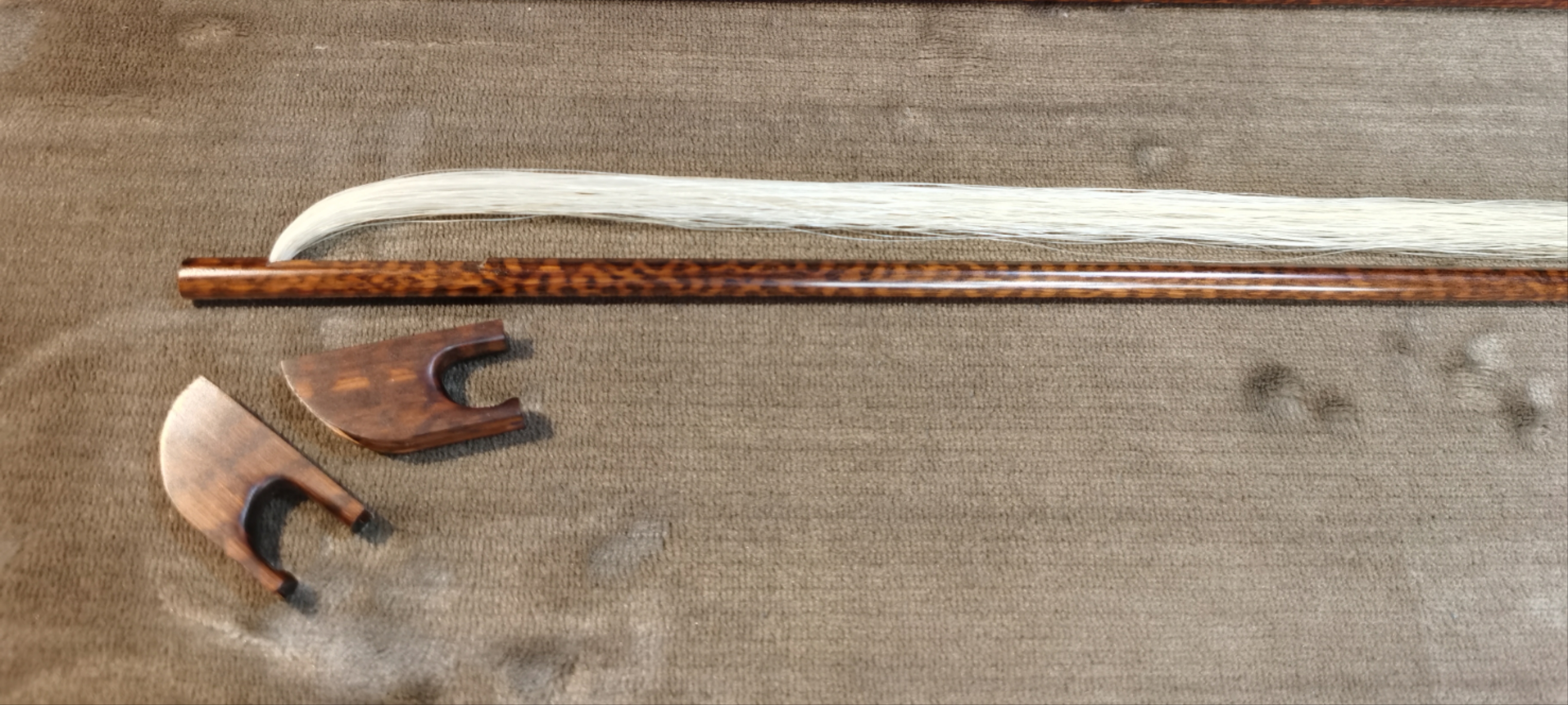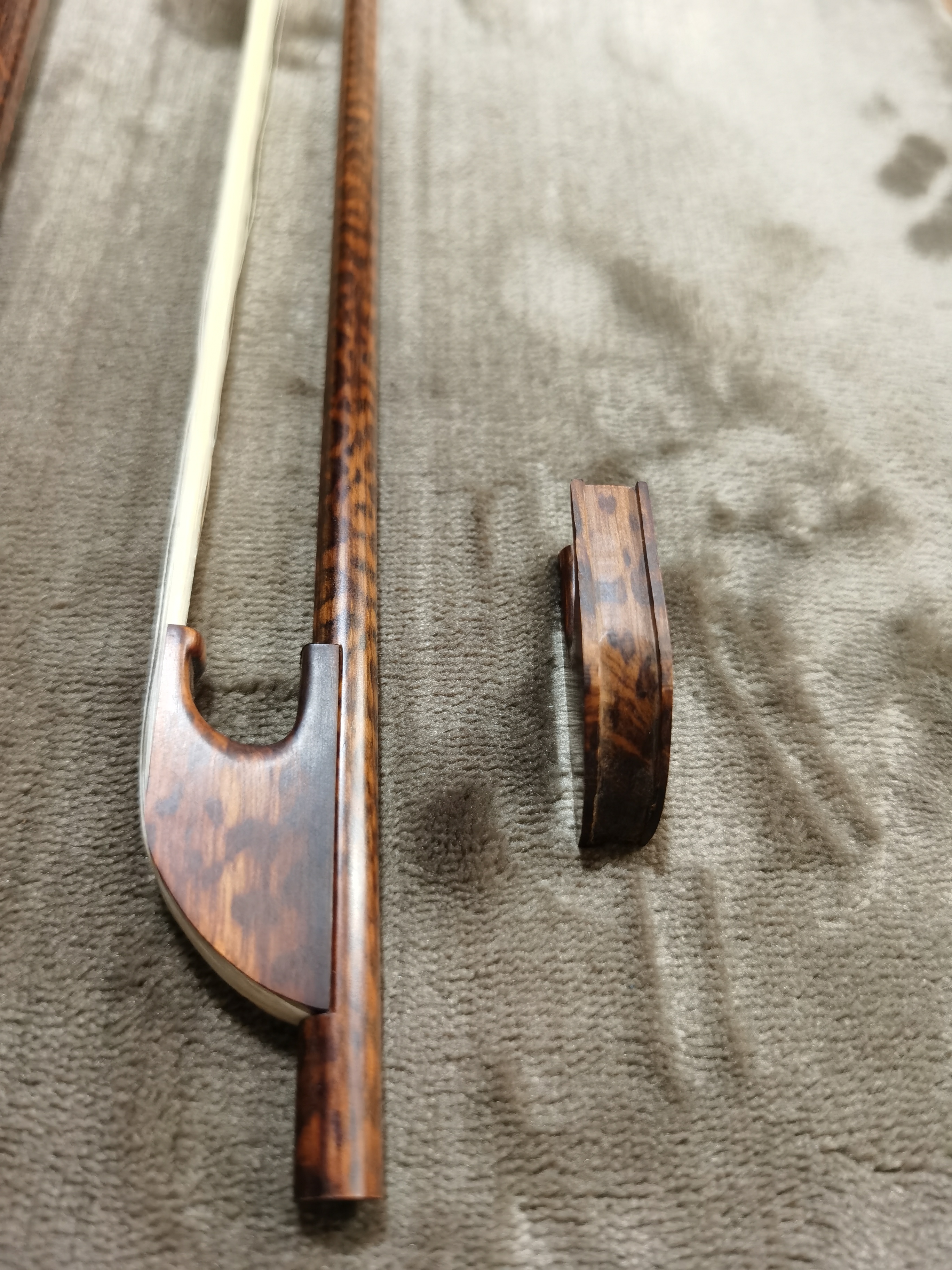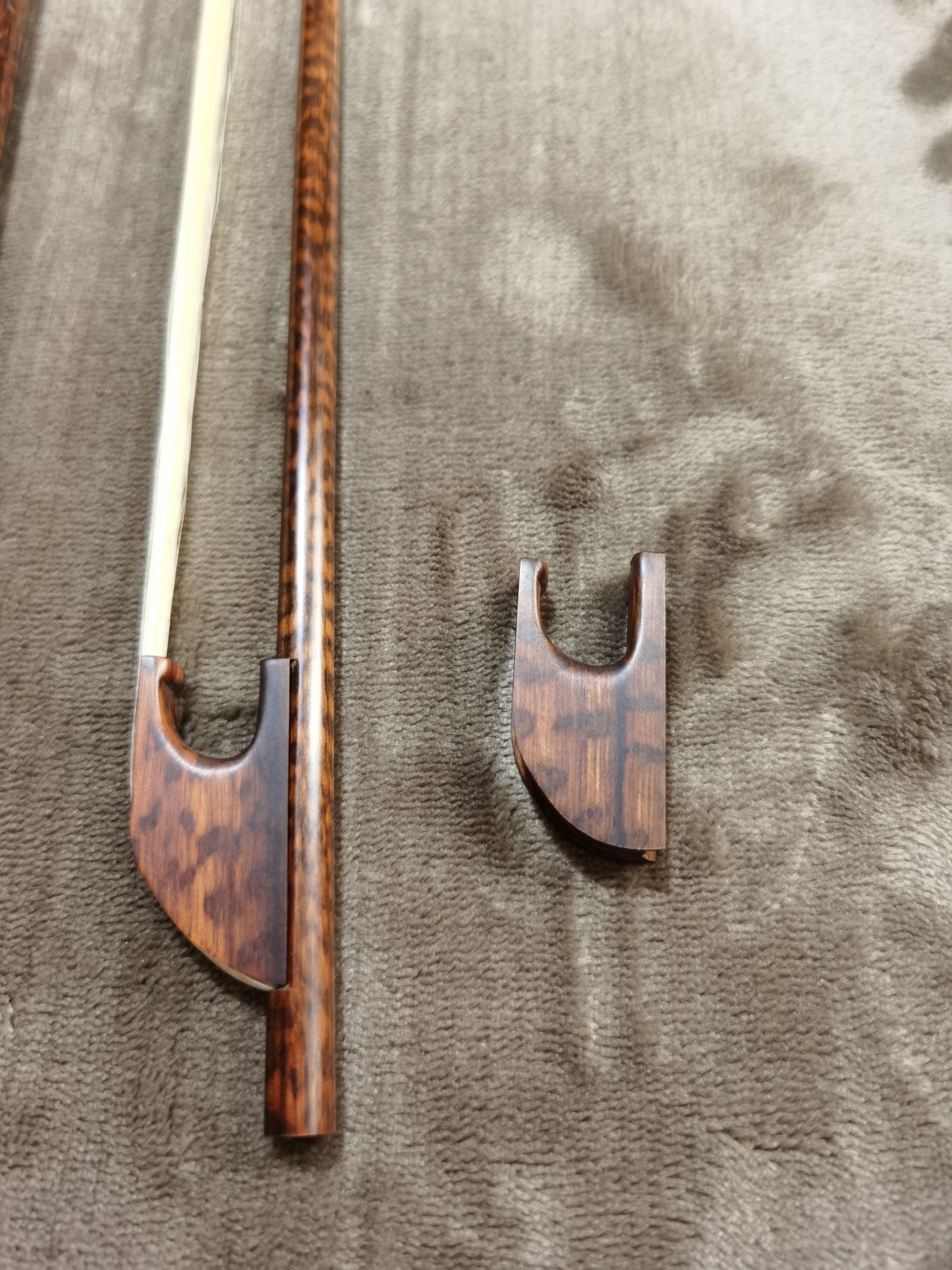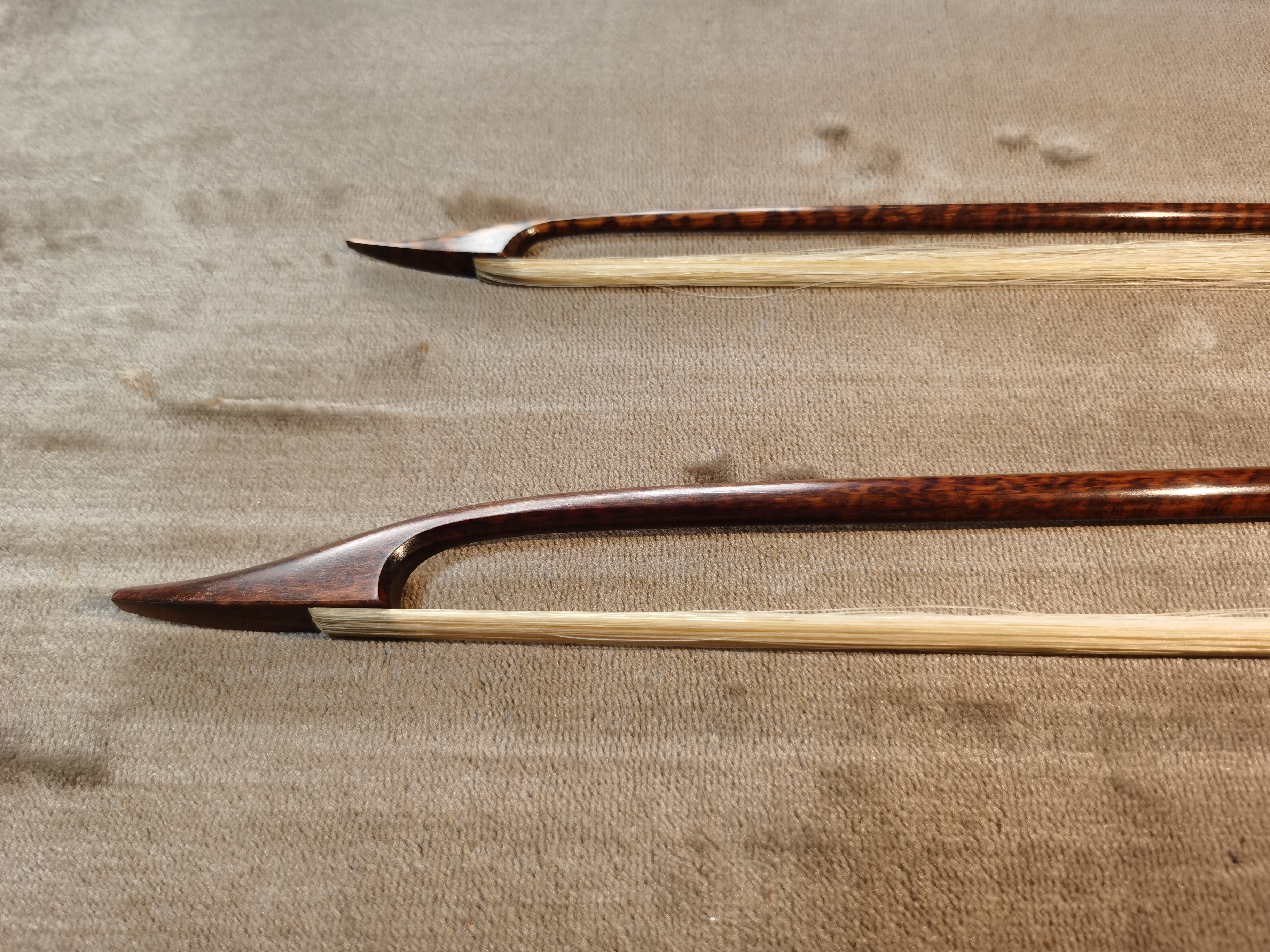Clip-In Frog Explained: The Beautiful Bow Design
Among the many types of historical bows, the clip-in frog is the oldest and most distinctive. Widely used in the 17th and early 18th century, it marks the starting point of modern bow evolution.
Construction Features
- Frog: A wooden block that clips into a mortise in the stick, secured only by wedges or friction—without screws or metal parts.
- Adjustability: No screw mechanism; to change hair tension, the frog must be removed and wedges reset.
- Stick shape: Often straight or gently convex, producing a springy and responsive feel.
- Length: Typically 55–62 cm for violin-family bows—shorter than later Baroque and Classical types.
- Weight: Usually 40–48 g for violin bows, though regional variations exist.
- Materials: Commonly snakewood (letterwood); frogs usually snakewood, sometimes ebony or other hardwoods.
- Hair ribbon: Often narrower than later bows, creating a lighter, focused tone.
Playing Characteristics
- Lighter frog shifts balance compared to screw-frog bows; some feel tip-heavy, others more centered.
- Produces a lively, articulated sound, ideal for speech-like phrasing.
- Legato requires more bow speed and control than with concave bows.
- Fixed tension makes playability more sensitive to humidity and temperature.
Many players find the clip-in bow naturally encourages Baroque articulation: short notes decay quickly, while dance rhythms and rhetorical phrasing feel intuitive.
Historical Repertoire
This bow was standard during the lifetimes of Monteverdi, Schütz, Biber, and early Corelli. By Bach’s later works (1720s–1740s), longer and concave bows appeared, but clip-in types remained in use.
- Early Baroque (c. 1600–1700): Clip-in bows dominated, perfect for dance suites, sonatas, and early opera.
- Mid-18th century: Transitional bows with slide-in or screw frogs emerged, though clip-in bows were still common in some regions.
Modern Use
Today, historically informed performers revive the clip-in frog as a key tool for authentic early Baroque sound. Makers replicate them to period dimensions, often adjusting wood choice and weight to musicians’ needs.
- Encourages natural articulation and rhythmic vitality.
- Works especially well for Monteverdi, Biber, and Corelli.
- Provides insight into 17th-century phrasing and tone.

